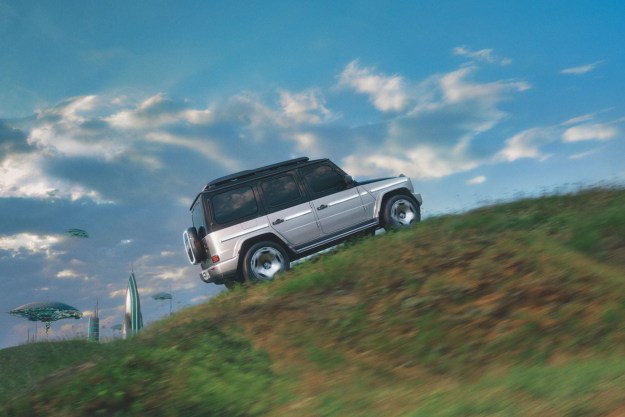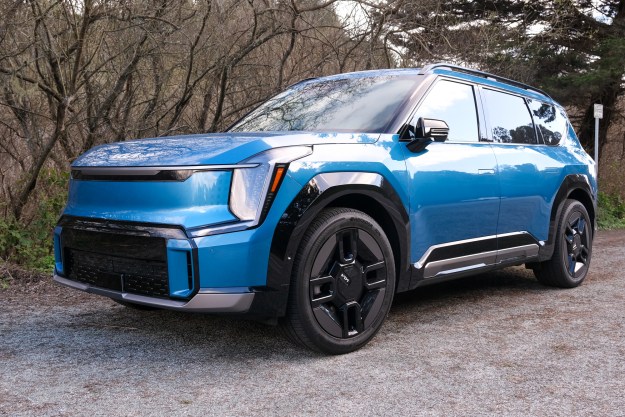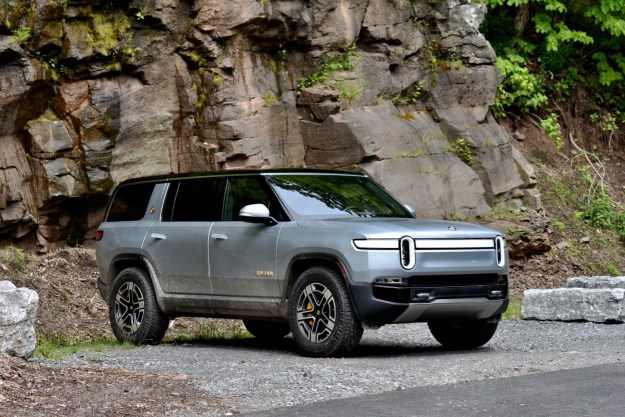
Ferrari didn’t get where it is today by playing it safe.
The Italian carmaker with the Prancing Horse logo has always pushed the limits of automotive craftsmanship and technology, which is exactly what it did with the newly unveiled LaFerrari hybrid supercar.
The LaFerrari’s party piece is a 6.3-liter V12 and electric motor combination. Together, they produce 951 horsepower and 664 pound-feet of torque. A Formula One-style Kinetic Energy Recovery System (KERS) charges the car’s battery pack and, to be clear, this hybrid never operates solely on electric power.
The entire package is housed in a carbon fiber chassis with a near-perfect 41/59 percent front/rear weight distribution. All of this should make the LaFerrari the fastest production Ferrari ever, although its maker hasn’t announced an official top speed. Yet.
Proving that a gasoline engine teamed with an electric motor can be both powerful and fun isn’t the LaFerrari’s only task. It’s also heir to an important tradition. About once each decade, Ferrari builds a supercar that represents the best technology of the moment.
Dazzling the world with new tech may be easy for the flashy hybrid, but living up to these legends won’t be.
 288 GTO: Prologue
288 GTO: Prologue
The 288 GTO, introduced in 1984, represented the end of an era – and a new beginning. It was Ferrari’s first modern supercar, and the last to be designed for racing. GTO stands for “gran turismo omologato,” or grand touring, homologation. That made the 288 GTO a literal race car for the road: Ferrari built it to qualify for entry into production-based racing series.
In this case, the racing series was the World Rally Championship’s infamous Group B category. The 288 GTO was supposed to go up against monstrosities like the Audi Sport Quattro and the mid-engined MG Metro 6R4. However, a deadly 1986 crash made the Group B cars go away, and the GTO became a pure road car.
With a 2.8-liter, twin-turbocharged V8 sitting in the middle of the chassis, the 288 GTO had all of the makings of a modern supercar. But, it was based on the 308 GTB and was built to conform to a set of racing rules. Ferrari could have gone further and, soon, it did.
 F40: The ultimate supercar
F40: The ultimate supercar
In 1987, Enzo Ferrari decided to build the ultimate road car. The F40 wasn’t designed to fit the rules of a race series, but it was the fastest car of its time and the last one Enzo Ferrari worked on himself.
Having literally thrown out the rule book, Ferrari took the 288 GTO’s mechanicals to the extreme, creating its first high-tech flagship. The F40’s 2.9-liter twin-turbocharged V8 produced 478 hp and 425 lb-ft, and its body and chassis were made from a mixture of carbon fiber, Kevlar, and aluminum.
The F40’s top speed of 201 mph made it the fastest production car in the world at the time.
However, the fastest car of the ‘80s was remarkably old school. It had a five-speed manual transmission, wind-up windows, and no door handles. Most importantly, it also lacked electronic driver aids. All of the tech that made the F40 great was mechanical, which meant there was less of a safety net, but also a purer driving experience. That’s why some car enthusiasts still consider the F40 to be the ultimate supercar.
 F50: The dream of the ‘90s
F50: The dream of the ‘90s
In 1995, Ferrari introduced the F40’s successor, the F50, to celebrate the company’s 50th birthday. With a 4.7-liter V8 producing 513 hp and 347 lb-ft, the F50 was one helluva present.
It might look like a convertible F40 at first glance, but Ferrari’s flagship for the ‘90s was much more advanced. Ferrari envisioned the F50 as a road-going Formula One car, making it responsible for the technological link between Ferrari F1 and road cars that is apparent in nearly every model Maranello has put out since.
The F50’s backbone was a racing-style carbon fiber tub, with the engine and transmission bolted directly to it as a stressed member. It also featured an electronically-controlled adjustable suspension system. It even had single wheel lugs (for fast pit stops at Auto Zone, presumably) made of titanium.
However, sometimes being on the cutting edge means actually getting cut. Without a separate subframe to hold the engine, the driver was punished with vibration. With a 202 mph top speed the F50 also couldn’t lay claim to the “world’s fastest car” title, because even Ferrari couldn’t compete with the almighty McLaren F1’s 240 mph velocity.
 Enzo Ferrari: A true Formula One car for the road
Enzo Ferrari: A true Formula One car for the road
If technological advancement is measured in leaps, the F50 was more of a long stride. Ferrari fans would have to wait for the new millennium for a car that would truly move things forward.
Naming a car after the founder of the company is a gutsy move, but the Enzo Ferrari was that good. The Enzo was the first Ferrari flagship to take advantage of computers in a big way, setting the template for performance cars of the ‘00s and beyond.
With its pointed nose, the Enzo definitely looked like an F1 car, or an interstellar warship. Motivation came from a 6.0-liter V12 with 650 hp and 485 lb-ft.
That grunt was backed up by an F1-style automated manual transmission, complete with paddle shifters, sequential shift lights, and a Launch Control mode for leaving stoplights in a hurry. Just a few short years later, launch control is now de rigueur on supercars, and you can get paddle shifters on a Subaru Legacy.
The Enzo was also the first Ferrari supercar with traction control, making it relatively easy to drive quickly. Electronic aids still help save drivers from themselves in current Ferraris, although the the more tactile feel of the F40 and F50 has been lost.
As with the F50, Ferrari chose not to challenge the McLaren F1’s speed record. At 217 mph, the Enzo was the fastest car in production (McLaren had moved on to new projects) when it went on sale in 2003. The McLaren and the F1 were soon bested in the top speed race by the Bugatti Veyron.
Conclusion
Each Ferrari flagship has used the best tech of its period to advance the art of driving fast. With its trick hybrid powertrain, advanced aerodynamics, and lightweight construction, the LaFerrari has definitely one-upped its predecessors on that front. However, like the 288 GTO, F40, F50, and Enzo, it needs to be great to drive.
Otherwise, it’ll just be an expensive collection of soulless hardware.






